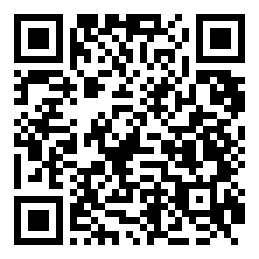Forum, “Fuero” and “Foras”!
On the shared construction of a design without geographical, academic or professional boundaries.

Featured Contribution
I assume the knowledge on design as located, therefore I will contextualize the ideas from which I will structure my points: towards the end of her work «The Industrial Design Reader» from 2003, doctor Carma Gorman —art and design historian, professor at Southern Illinois University in/of Carbondale, and associated editor of the journal Design and Culture of the Berg British publisher— included, last among 62 texts which make up her foray into one century and a half of thinking on industrial design (1851-1999), an article by Donald Norman, originally published in the 1999 summer issue (vol.18, n° 2) of the journal Innovation, produced by the Industrial Designers Society of America. The title of Norman’s article is: «Time for a Change: Design in the Post-Disciplinary Era».1
Faithful to decades of labor aimed to broadening the span of design in favor of humankind, and as a steady man of study of cognitive science and usability, Norman asked for the phasing out of the segregation which keeps disciplines linked to design hermetically confined inside «epistemological boxes». Back then, Norman requested that we who live in (with, by, and for) design tear down the walls standing between practices, to «un-wall» trains of thought, and I happily believe that, with its sixth anniversary just round the corner (that was then, when I initially wrote the original version of this text in Spanish, we are now in the eighth year since FOROALFAʼs foundation), it is something that we on FOROALFA, as much those who started and nourished it as those of us who enjoy it or contribute our opinions, whether grand, unimportant, modest or annoying (choose as you wish), are beginning to attain: there must be a reason why a number of participants join this continuous transboundary dialogue on design on a daily basis.
In order for a good design to be achieved, Norman proposed that there should be understanding between the disciplines involved in product development (industrial, graphic, engineering-related, marketing, etc.). Right afterwards, he requested that such disciplines team up along the entire development process, carrying out the necessary negotiations targeting customers and companies’ needs’ satisfaction. Naturally, it is pertinent to bring to mind here that disciplines in isolation are but abstract entities; they are barely operational social fictions: it is us humans who theorize them, integrate them and work on them at a given time, building upon the legacy left to us by those who constituted and christened them in the past, it is us who make up the living body of all human activities...
I silently followed the growing flow of information on FOROALFA for months, until the multiplicity of topics, the enthusiasm and the reflection of those who express their opinion and, above all, the quality and quantity of adhesions and communications gradually maturing, made the longing of contributing to the community design irresistible. The longing of saying: this is where I am, this is how I design and this is what I think. Etymology often suggests me structures, for instance the word Forum, whose origin takes us back to the ancient Roman squares: outdoor spaces where a myriad of dialogical interactions took place; public venues for purposes of trade, finance, law, mysticism and leisure in which, despite their differences, Roman citizens used to weave and intersperse their daily social and community lives.
Overcoming differences is a complex matter, as we are reminded by Norman:
«It wasn’t always easy. Individuals from a variety of disciplines have a variety of educational backgrounds, different sensitivities and working styles. Words can carry entirely different meanings when used in a variety of disciplines. It may be a matter of weeks, months, even years before teamwork turns into a smooth-flow something. Yet time allows each discipline to gain appreciation of the contributions the others can make».2
Norman proposes that among professions: engineers and industrial designers, fashion specialists and graphic designers, it is possible to unveil meanings for the word design itself with an assortment of tones; this also applies within the professions as such; thus professors and students belonging in a scientific-approach industrial design school, are likely to express, by majority, notions that contrast with those displayed, also by majority, by professors and students belonging in a humanistic-approach design school.
I write «by majority», considering that some professors or students who defect and advocate a more humanistic design often coexist within a more technical or scientific community of industrial design; and sure enough, humanistic-approach communities also beget rebellious minorities validating scientific approaches to industrial design. There are even those who propose approaches other than those mentioned above. Furthermore, occasionally, changing the board of directors of a company or academy also changes its course of action; thus only a few industries, schools and faculties have sustained a single absolute posture throughout their history, along which conceptions of design mutate as well. Likewise, each person’s situation within the geographies of design causes, for instance, an average Argentinean industrial designer to hold theoretical-practical positions distant from an average Mexican industrial designer or from another average Colombian industrial designer (if those «average» professionals could be said to exist, since I consider «average» people as mere fictions through which experts make attempts, hardly ever successful, to narrow the immense human variety down to a simple set of statistical figures). The phenomenon occurs on and on among regions within one same country, among faculties and industries; in the city, even in offices, classes and classrooms, even so with people who practice design throughout their lives, including their years of academic formation.
Will there still be then, by any chance, anyone who intends to reduce all things design down to a single, monolithic and dogmatic conception (which, by the way, is generally their own)?
Many people, many designs
It is most particular the fact that all those people from so diverse schools and faculties, with such heterogeneous moments of experience: juvenile or mature, technical or conceptual, from a variety of geographical and social backgrounds, all of them design and advance processes and practices which generate products of design (which, for the record, I conceive as a basic human skill that varies according to whom performs it, whether individuals lacking academic formation on the subject, or students, professors, practitioners, or researchers of a number of orientations).
From what it seems, design is not a sole and ineffable entity. And that causes the great contribution of FOROALFA to be the promotion of the reciprocal interaction among numerous persons owning multiple experiences (rather than attempting to describe «truths», independent from anyone). Every individual’s path of experience in design is deservedly worth being listened to.
Designing, regardless of what specific professional or academic field action is taken in, implies a huge amount of experiences for whoever works in it and, I am sure, we always gain understanding of our own practice of design when we look ourselves in the mirror of our colleagues’ professional, teaching, or academic exercise. Following that vein, an article by Eckert, Blackwell, Bucciarelli and Earl was published a few months ago in the journal Design Issues, titled «Shared conversations across design». In it, authors discussed, compared, and contrasted explorations by means of carrying out sets of workshops, with the participation of people who worked in design in the United States and the United Kingdom, from very different professions and in a plurality of contexts (architecture, fashion, medicines, packaging, software, mechanics, electronics, furniture making, etc). I will emphasize the following from the text mentioned:
«Being exposed to this variety of experience allows designers to better understand their own behavior [through comparison, reflecting on strengths and weaknesses, as well as gaining new understanding of their design practice as reflected by the mirror of others’ professional work]. None of the disciplines is seen as normative, and none is used as a benchmark. The goal is not to describe what design «is» in a definitive and generic sense, or indeed to prescribe how design «should be,» but rather to understand how it manifests itself from the perspective of those who take part in it».3
It is precisely there where the worth of this forum lies: in taking distance from dogmas and individualisms. Thus the vigor of a community of design is given foundation through the multiplicity of its products and, above all, it is validated in the continuity, quantity and quality of the conversational interactions among its members. In that sense, I am making a call for the enrichment and augmentation of dialogue; a call for the progressive articulation of the comments posted by us below each article. I therefore propose that on FOROALFA we should get over that phenomenon, occurring so often on Internet, which consists on either praising or despising a text’s author, without making a link between our own impressions with those of whoever expresses their thoughts on the same matters, inasmuch as it is within that dialogical network that creative possibilities dwell. FOROALFA enables us to «listen» to what others think about design or how they practice it in ways far different from our personal assumptions; it also allows us to beneficially observe other designers theorize the way we would not do it.
By reading on FOROALFA I discovered that we commonly tend to ignore what others have to tell us about those matters we easily take for granted and supposedly know so much of. And I also realized that when it comes to a design forum, neither gray hair, experience, college degrees, positions of authority held, awards won, millions made nor projects pulled off, nothing makes a designer’s opinion better or more elevated than another’s (dialogue does make them both better, though).
This forum taught me to question the absolute value of novelty and to be able to locate it within each individual’s unique coordinates; I grasped that when somebody tells me about a project I have already known, or a film I have already seen, or a joke I have already heard, or their impression on a book I have already read, or about an appreciation on design I do not share, it is appropriate to read what they have written attentively because regardless of whatever I have previously designed, seen, or where I have visited, not even in my most telepathic arrogance, will I ever be able to know what reflecting on that same project is exactly about in their mind, or to see that movie through their eyes, or listen to that joke from their ears, or characterize design from their experience. If it is only a conceited act of presumptuousness which leads me to underestimate or reject visions other than my own, not only will I be failing to accomplish my part in the social pact aimed at building the designs we are interested in, but also we will both lose as designers.
Open dialogue
Allow me to retrieve the etymology of Forum. Initially, it referred to forum understood as public square (and today, 2013, it refers to any real or virtual space for conversational encounters). At some point during Medieval times, parting from the word «forum», people started to use the word «fuero» [charter; jurisdiction, authority] in order to refer to the legal regulations upon the relationships between people in political administrative territorial divisions or among members of human communities, reason being that it was in public forums where justice was imparted and laws for regulating interaction were established. Thus we speak of «forensic activity» so as to refer to that of lawyers and judges or we call «forensic medical doctor» that practitioner who works in justice. It is suitable to bear in mind here that, back in January 2011, during his IxDA (Interaction Design Association) lecture, Richard Buchanan highlighted the relationship of design and justice «even though justice of design is not punitive so as to punish evil, yet distributive so as to provide the largest number of people possible with the creative fruits of our labor».4
This such distributive justice applies well on FOROALFA, inasmuch as it is the «fuero», the authority, the jurisdiction, the right bestowed upon us due to our belonging in the massive community of design: listening to one another’s version on their design lifestyle thoughtfully. And naturally, being listened to. This approach makes it possible to discourage those rampaging conducts we are prone to fall into when we speak of design as if it were one single person («design needs...», «designs is looking for...», «good design demands...») so that we can impose our points of view upon others. Let us accept it: design is a communal activity large numbers of people participate in amid colleagues’ camaraderie and, whether we like it or not, many of them conceive it so differently from us.
As an educator, I feel I owe absolute responsibility to my past, present, and future students; and thanks to this forum I got to apologize if there was any time when I ever showed them design as one monolithic notion, as someone being «right»; or if, when from that perspective I may have presented design as a domain in which only a few lonesome individuals won over their competitors. I regret having occasionally made students believe their classmates were their contenders. They are all each other’s community!, fibers from the same creative muscle, and valid interlocutors with whom to grow and build. Nowadays I enjoy design as a collective open process, where no individuality rules over those of the others, and I feel compelled to leave the selfish notion of competitiveness behind, as seductive as the word may sound, since I cannot help finding associations between its usage and that treacherous, jealous individualism which has so long preyed upon design classrooms and companies; at least upon those I have known well.
I am moved by the fact that the term «forum» is derived from the Hindu-European root «dhwer-», which refers to an opening leading outwards, in other words, a door! From the term also comes the adverb «foras» («out», or «outside») from which in turn come the words foreign, «forastero» [alien; outsider; visitor; stranger] and «fuera» [out].5 The ancient Roman Forum was precisely located outside the walls, and it owed its name to that! Likewise, and thanks to FOROALFA, Ibero-American design communities have begun to generate a plural design built under our right («fuero») to listen to each other; not on the base of restrictive agreements but on the foundation of the agreement on the possibility of expressing disagreements.
In this manner, and in this place, we so start to abandon conceptual walls, to step away from professional divisions, from communicative biases, now for designing doors leading to the future, and towards the other professions, with plural voices of our own; we have begun to emerge from the limits of guilds, academies, companies and geography in our quest for new horizons: because in design, and to us people who love design everything, even the seeming endings, will always be starting points.
Boost your career
Don’t just stop at reading. Discover our updating and specialization programs to take your professional profile to the next level.
View Academic OfferShare
Please value the editorial work by using these links instead of reproducing this content on another site.

- Norman, Donald «Time for a Change: Design in the Post-Disciplinary Era» en Carma Gorman The Industrial Design Reader (230-232). New York: Allworth Press. 2003.
- Ibid. (232)
- C. M. Eckert, A. F. Blackwell, L. L. Bucciarelli, and C. F. Earl (2010) «Shared Conversations Across Design» en Design Issues: Volume 26, Number 3 Summer 2010 Massachusetts Institute of Technology, (pp: 27-39).
- See Buchanan Richard (2011) «Who are we? Where are we? And where are we going?» Keynote at 11 IxDa, see minute 51.40.
- Compare with Ethymology of Fuero (2011) on Etimologias.dechile.net. Latest change made Sunday May 8, 2011. Published on 05/23/2011.
Topics covered in this article
What do you think?
Your perspective is valuable. Share your opinion with the community in the discussion.
Comment now!



